At Nowhere, DIWO in the Spanish desert
Published 17 August 2019 by Jean-Jacques Valette
The objective of Nowhere, the Burning Man of Europe, is to build camps that are totally self-sufficient in water, energy and food for one week. And to create beauty in these extreme conditions. Our chronicler joined the Bababarrio camp.
Chronicler in residence (Feral Labs Network), words and photos
Three hours west of Barcelona, on the highway to Zaragoza, we turn off on a dirt road leading into the Spanish desert of Los Monegros in Aragon. As the car winds between high mesas reminiscent of the American Southwest, we soon find ourselves covered in dust. We’re en route to Nowhere, the European equivalent of Burning Man.
Nowhere, held this year on July 9-14, is as unknown as Burning Man is famous. Founded in 2004, Nowhere gathers 3,500 people in Aragon, versus 70,000 in Nevada. However it’s the same spirit that prevails, perhaps at a more human scale.
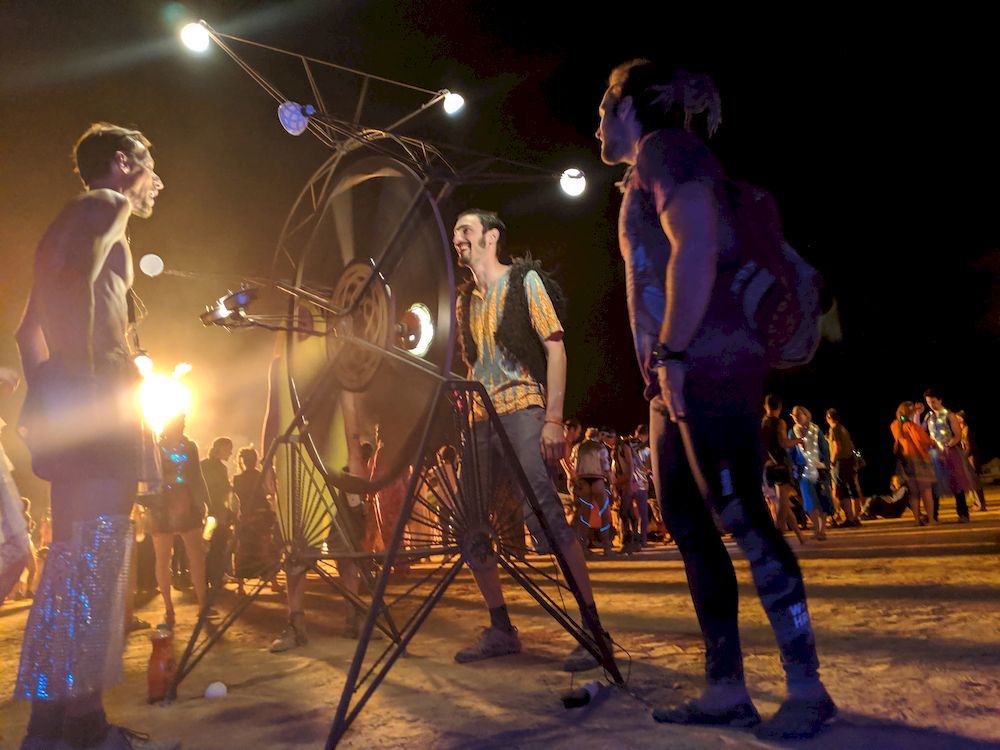
Geodesic domes and ship containers
Right before us, an ephemeral city dedicated to art and festivities emerges on the blank page of the desert. The temperature is still 40°C and a dust storm circles on the horizon. As the festival opens the next day, camp teams are busy stretching out tarps and straps. In the golden light of dusk, we see geodesic domes in the background, ship containers and the towering silhouettes of tent tops. A few light garlands are already pink stripes against the indigo sunset.
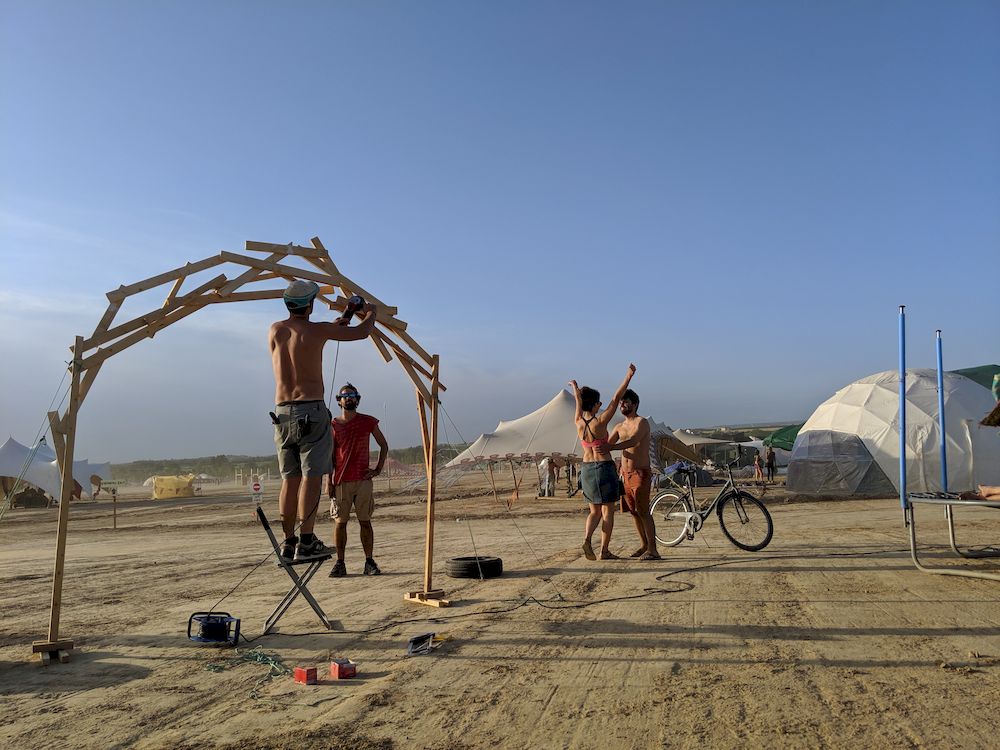
Everything was brought on site by participants like ourselves. At Nowhere, there are no artists, no consumers, only participants. It’s one of the 10 principles of Burning Man, along with self-reliance, zero-commerce and zero-waste.
The 170€ entry ticket buys nothing more than access to portapotties and emergency services (as well as a few grants for the most ambitious art or technology projects). It’s up to the participants to bring their own water, food, energy. And it works beyond expectations.
Giant hamster wheels
Each camp competes to build the most welcoming or most audacious structures. An enormous red velvet cabaret tent stands near a DJ truck transformed into a neon-spiked chameleon, a canvas labyrinth with secret rooms, a fire-breathing hamster wheel… Anything is possible at Nowhere.
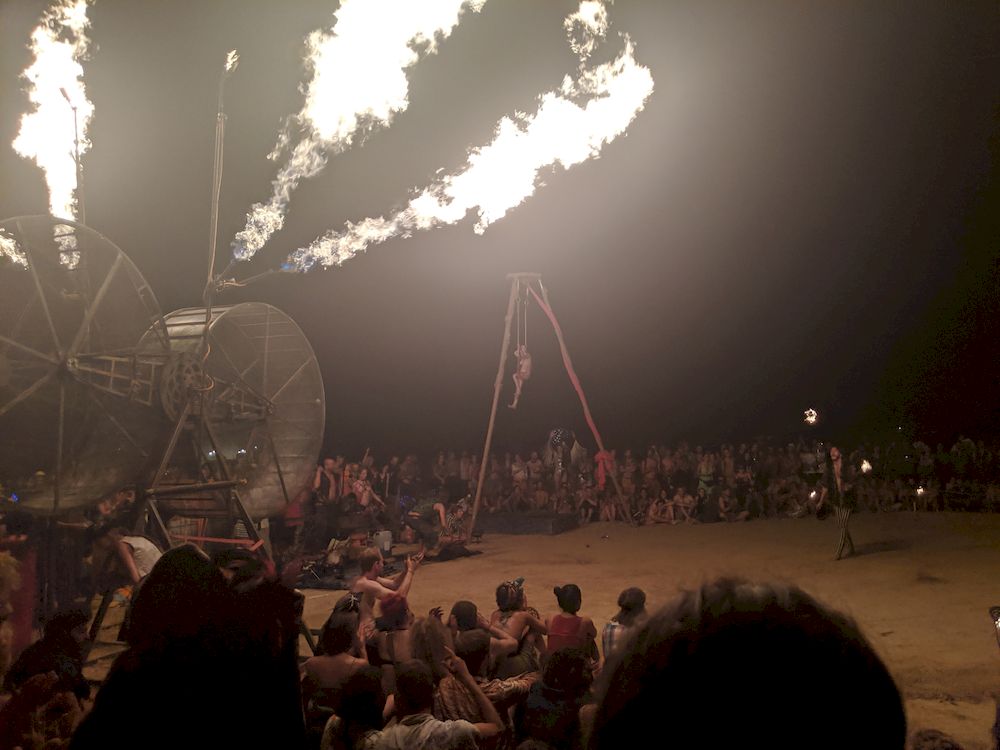
This is precisely what led me to join a “barrio” (camp of about 50 people), which allows for common logistics and more ambitious projects than solo “freecamping”.
Camp Babababarrio is celebrating its second year, with mostly Parisian members. Most are thirtysomethings working in art, architecture, design and communication, Do-It-With-Others (DIWO) fans who have found a playground here to thrive.
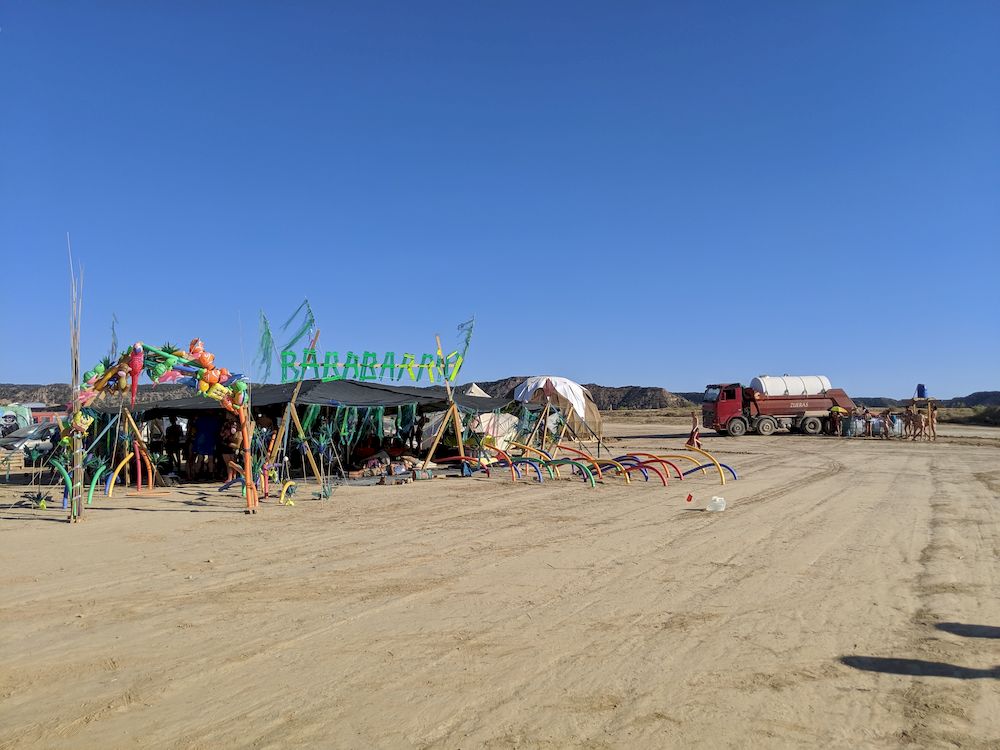
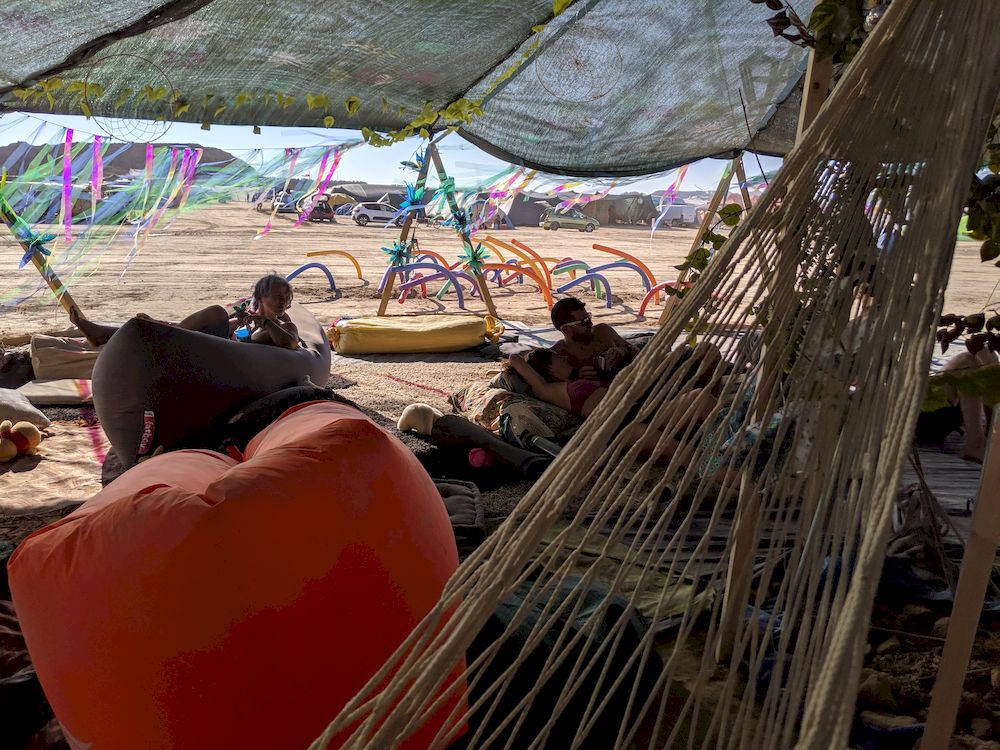
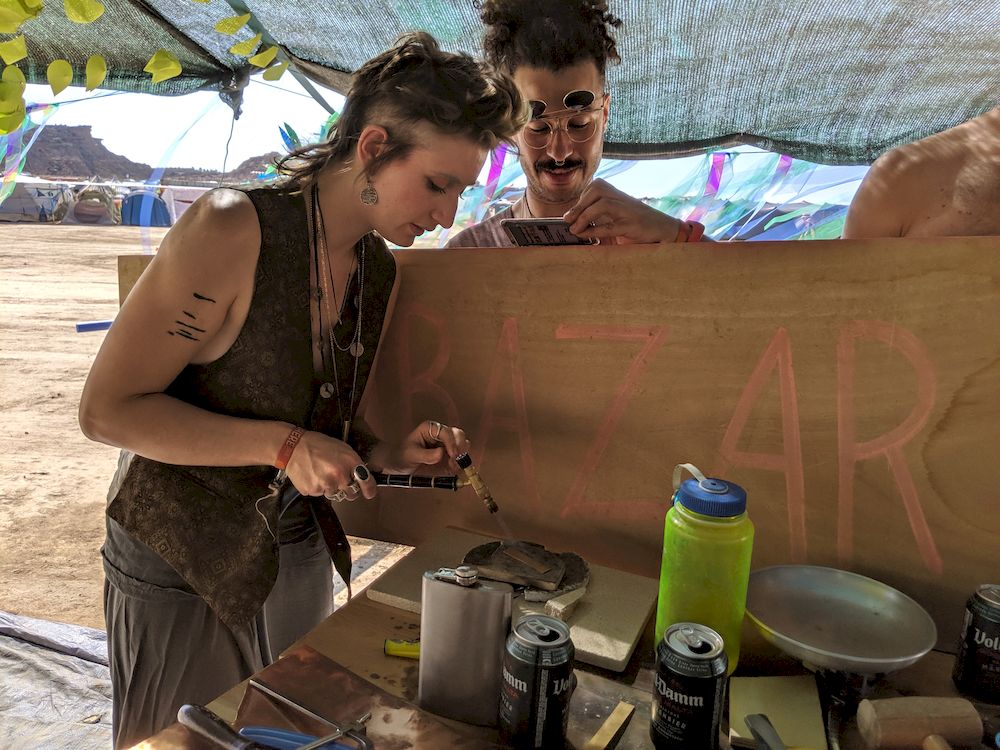
200 Burning events
The Burning Man movement has spread around the world since the late 1980s and now counts some 200 events. Beyond the original Burning Man in Nevada, there is Mid Burn in Israel, Afrika Burn in South Africa, as well as several smaller festivals in Europe such as Borderland in Sweden, Nest in the UK, Where the Sheep Sleep in the Netherlands, Crême brûlée in France… and of course, Nowhere in Spain.
In order to realize their projects, burners must prepare several months in advance. As early as February, we met to constitute the team for our barrio, getting organized via Slack and Google Drive. Last year I made a little 20W solar generator, so I was assigned the role of “electricity lead” for the camp. My challenge was to meet the electrical needs of 50 people!
I quickly came up with the plan to build a solar generator using recycled parts, as powerful as possible, for under 500€. Then I would add a small thermal generator to power our sound system on party nights.
Electric shower and cold drinks
Several white nights later with my partner Simon in his workshop, we have a working generator: 210W, 190Ah of batteries in a weather-sealed box. Ten times more powerful than the previous version. We also made several dozen meters of LED light strings, a water pump for our shower and sink. I even taught the art of solar air-conditioning by evaporation to three people!
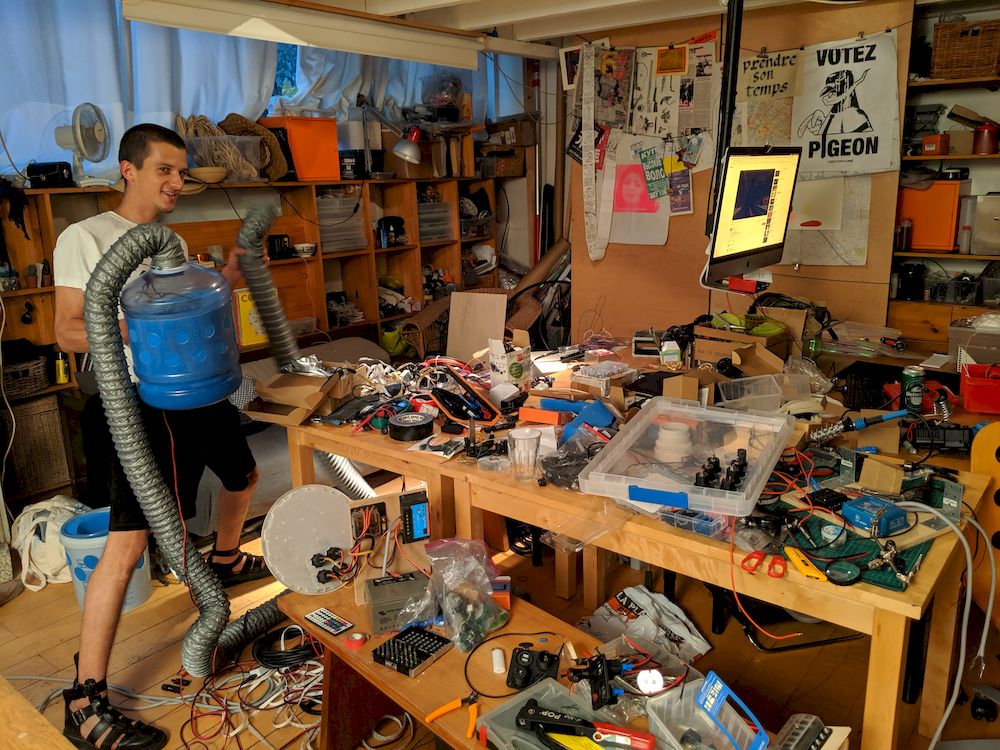
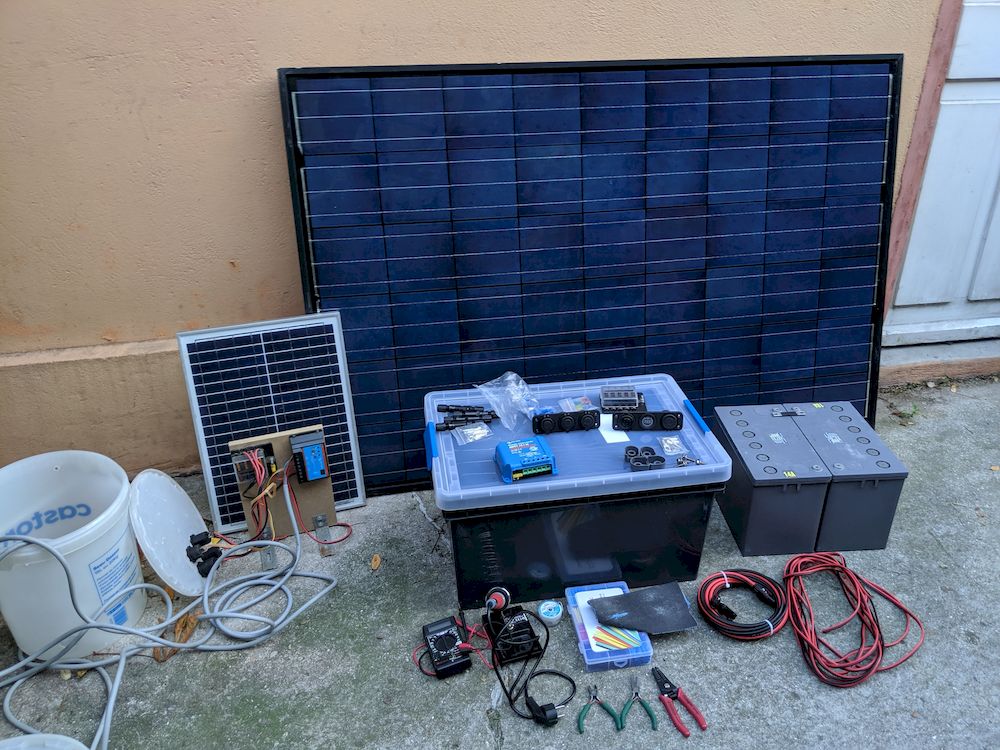
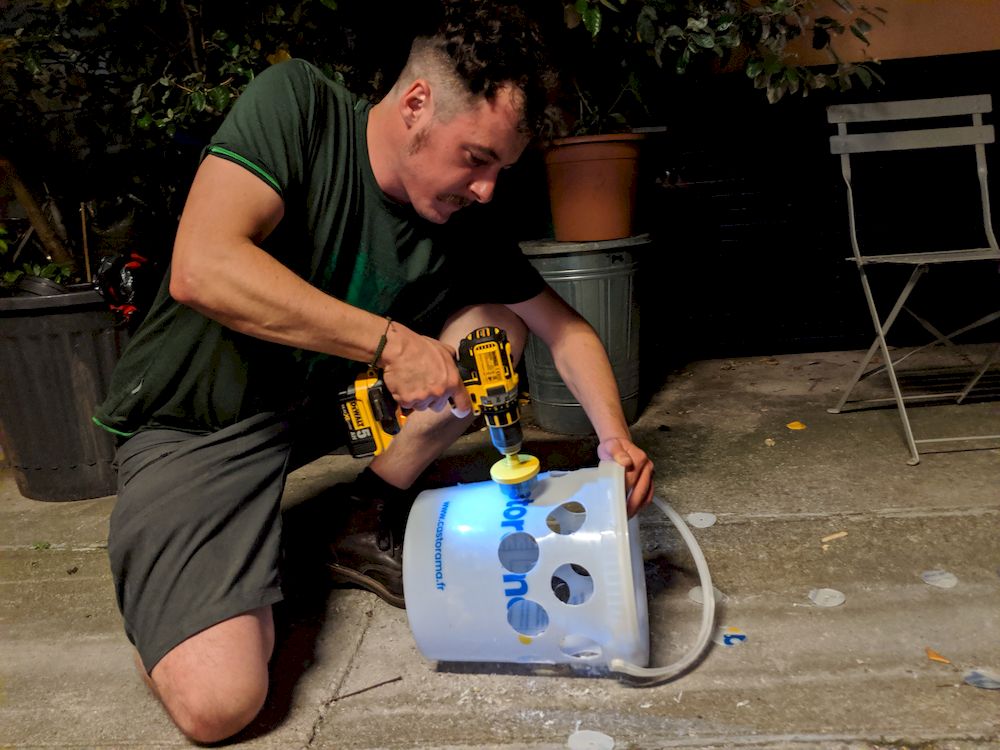
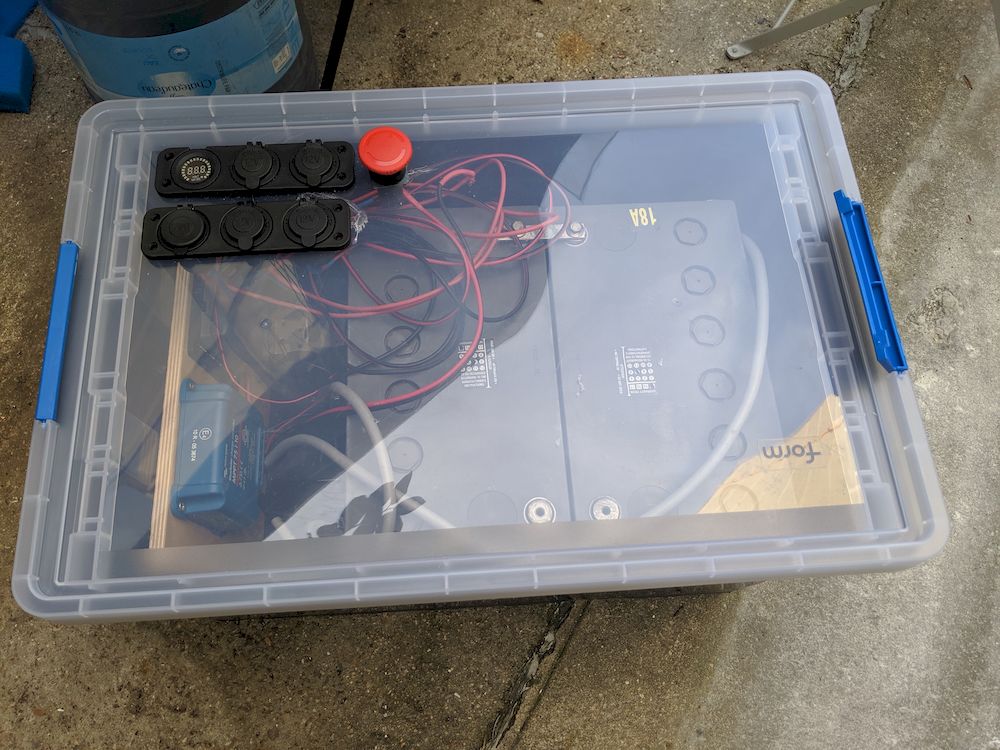
Just because we’re in the desert, doesn’t mean we have to give up all creature comforts. Belonging to a camp means you can wash and enjoy two meals per day, a large shade area and generally a bar with cold drinks. All for about 150€ per week.
This relatively high fee allows us to rent a truck for 1,700€ or buy half of a ship container for 1,300€, for example. It’s the kind of investment that you wouldn’t do for a simple weekend with friends but that will save us money in the long run.
For our main shade structure, the Bababarrio architects built a tented structure 11 meters in diameter using a central pole, ratchet straps and tarps. This required sewing dozens of meters of netting, digging holes for the anchors, raising the poles… but the result stands. Our Deco team even gave it a jungle style with upcycled plastic garlands and dichroic film with iridescent colors.
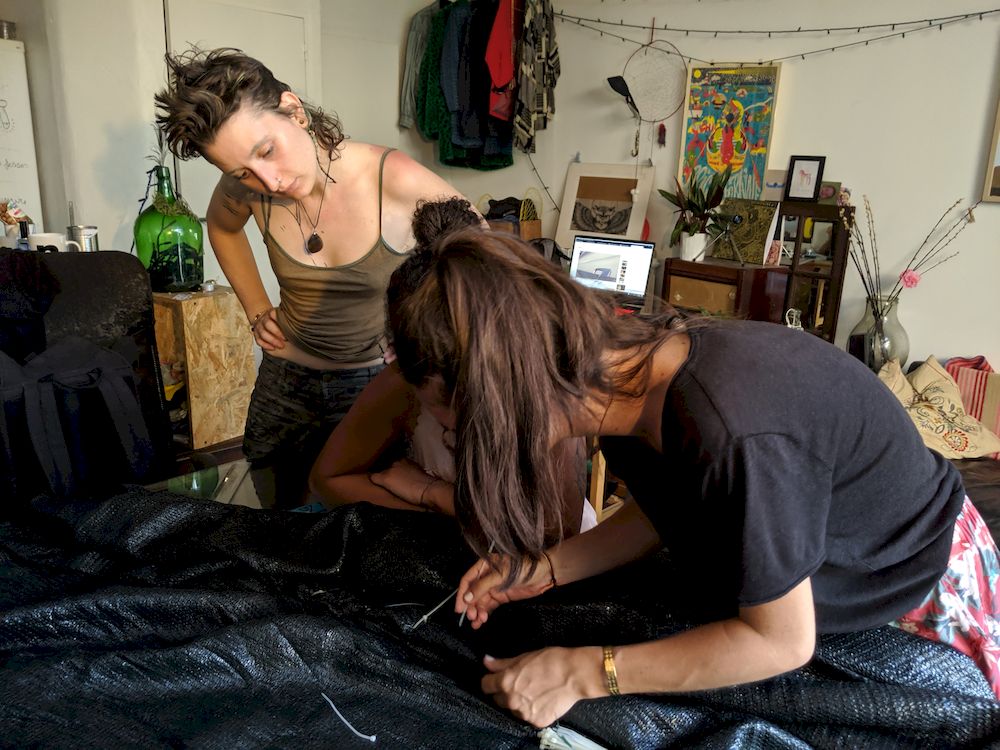
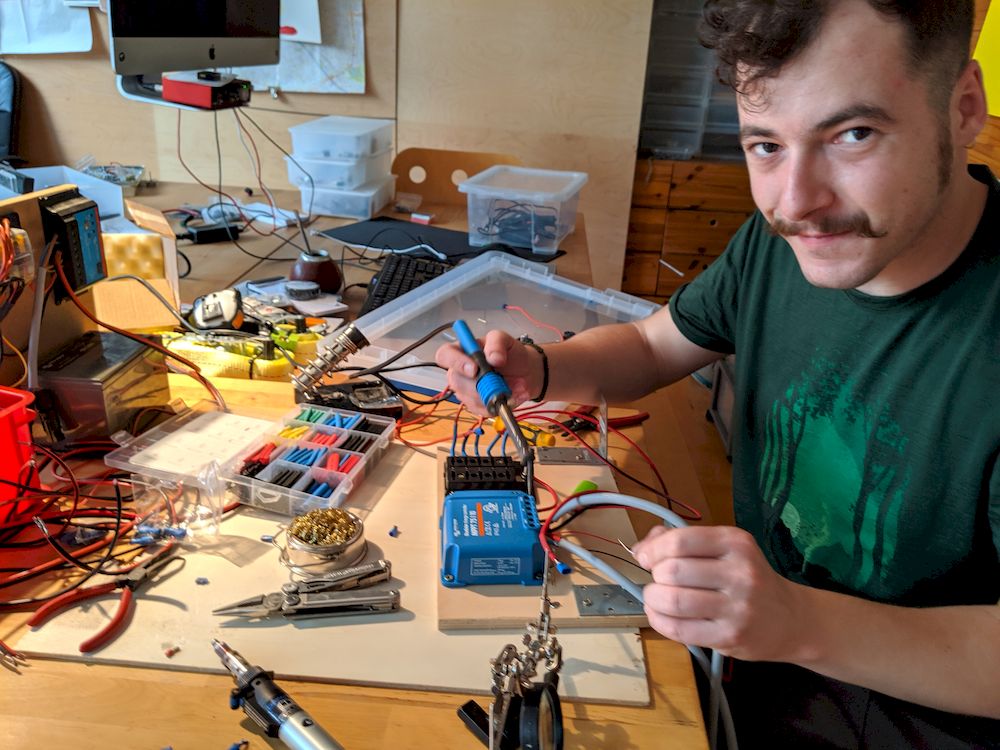
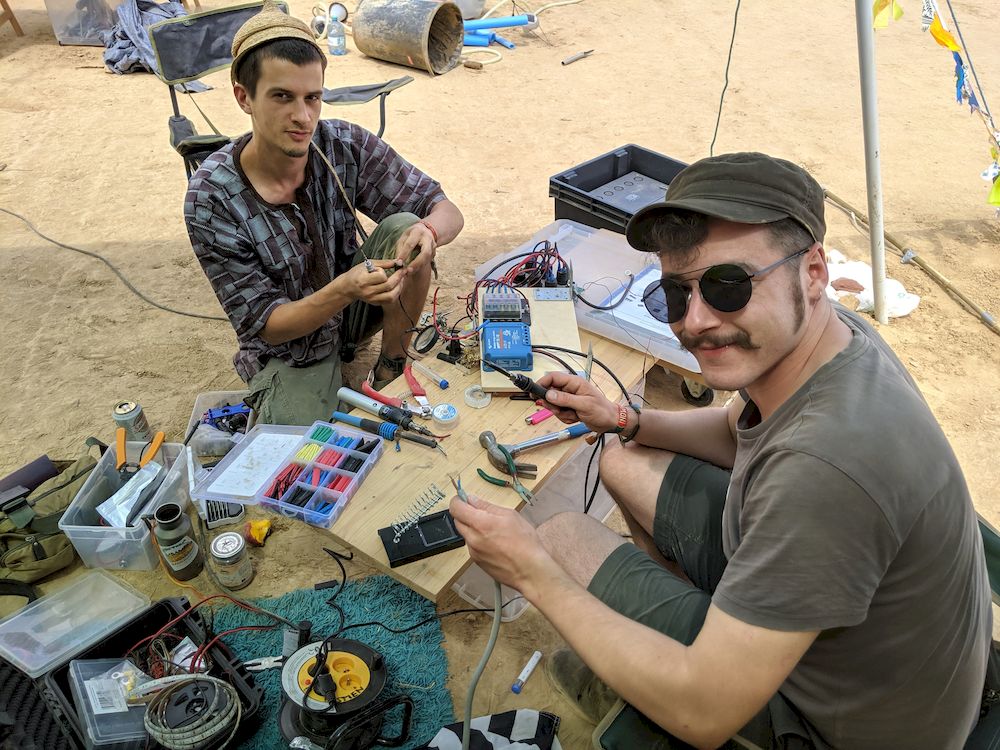
Brain cooling and lock picking
Our little tent is perfect for taking a nap in a hammock or hosting workshops in the afternoon. From yoga to Thai massage to body molding or lock picking, people can’t get enough. At least in the daytime, as at night our LED strings suffer from a few short-circuits…
Other camps go even further in their quest for comfort. At No Camp Camp, you can cool off your head in a refurbished hair salon helmet, while savoring a delicious German draft white beer. At Solonia Wilds, you can get a back massage from furry, vibrating car polishers. Elsewhere, people dug a 10m2 underground restaurant, or installed automatic vaporizers and even a swimming pool!
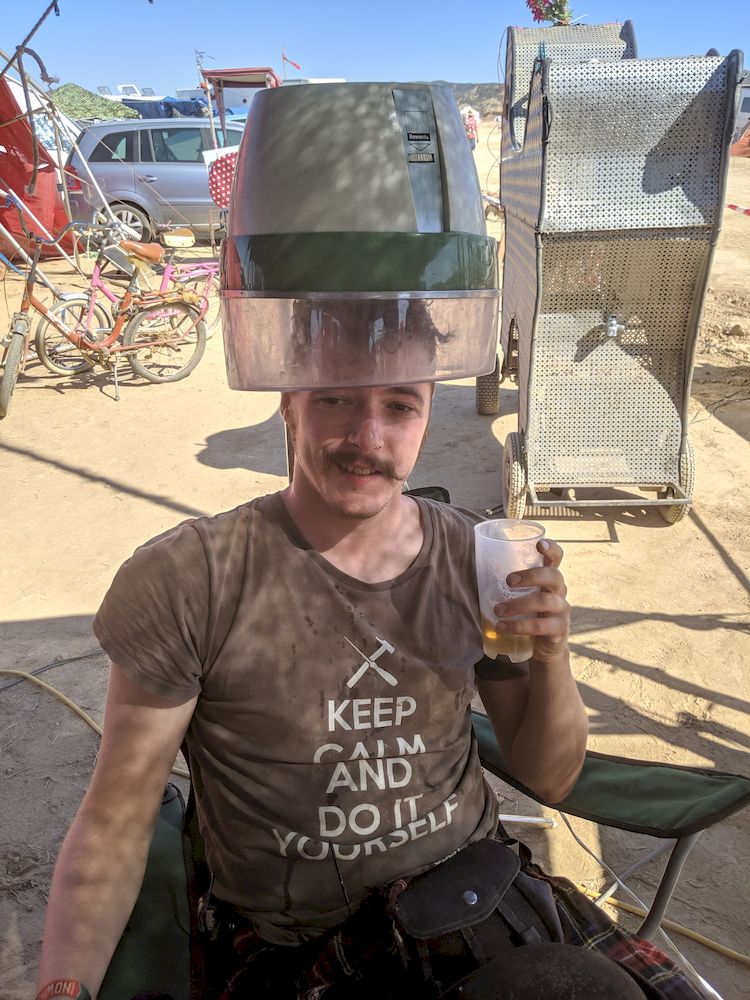
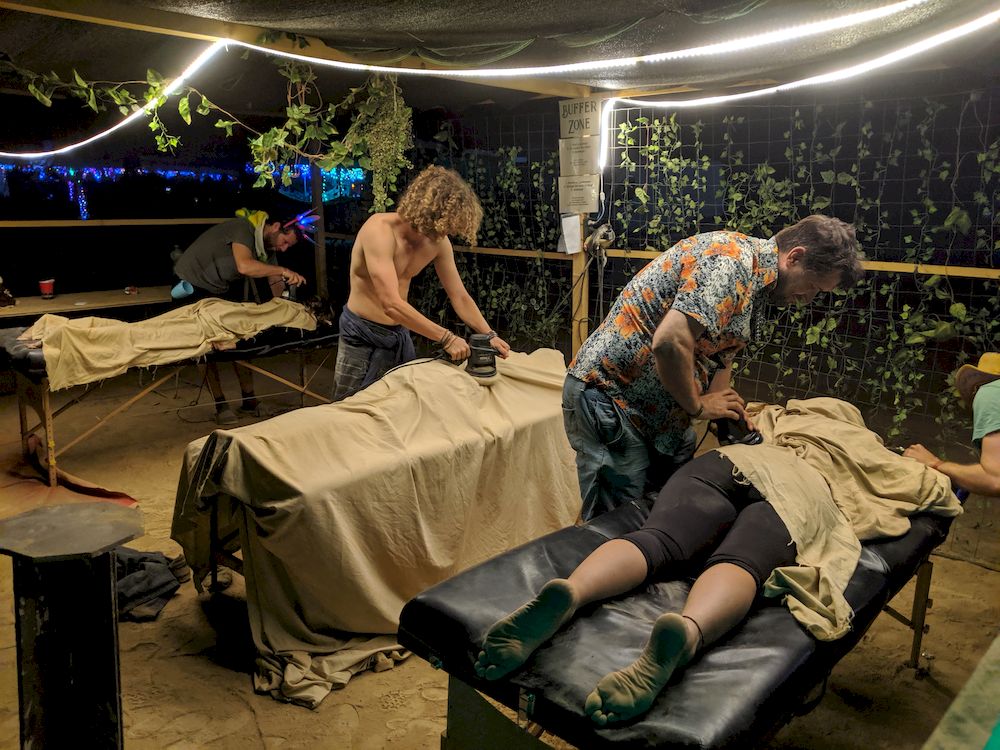
The best inventions may receive innovation grants and are published on a wiki. In this field, the SolarPunk barrio stands out. About 10 solar panels surrounding the camp power a freezer that contains the team’s pre-prepared meals in little biodegradable pouches that are reheated in a microwave. And the ultimate luxury: a cabin made from insulated panels offers the joy of air-conditioning!
SolarPunk energy
“Everything was built with 100% recycled materials and renewable energies,” proudly declares Tom Allen, one of the SolarPunk founders. Even the caravan behind him was salvaged from destruction.
For the thirtysomething Brit, Nowhere is a glimpse of what the world could be tomorrow, with a truly ecological and democratic society. This is what inspired him to rename his barrio Solarpunk—a minority science-fiction subgenre that imagines humans rebuilding sustainable utopias after the collapse.
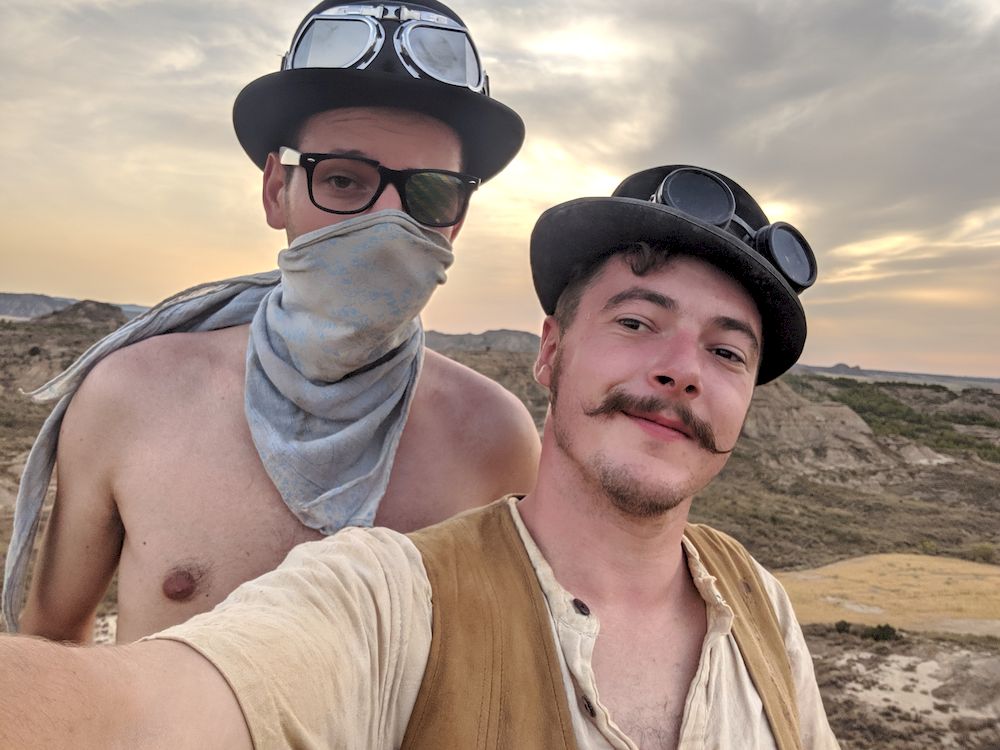
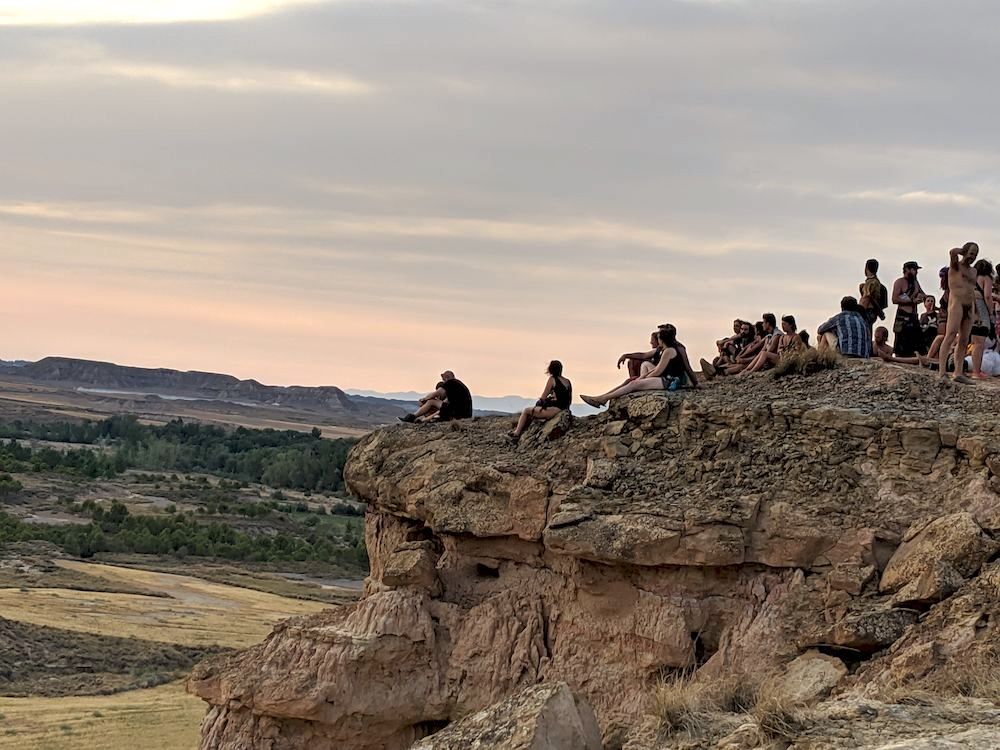
Looking around us, we just might believe in this new society. Without leaders or money, Nowhere still manages to create abundance and beauty. A space outside of time and outside of society. In front of us, a couple wanders between art installations with garlands in their hats. A giant mammoth faces them and suddenly lights up, to cries of joy.
Should we liberate ourselves from money in order to rediscover creativity? Is a society based on giving more ecological than one based on rarity? Most of all, how can we as humans organize ourselves without leaders and without fighting with each other? It’s with all these questions in mind that I leave Nowhere. But I will always be back to learn more!
More information about Nowhere
Jean-Jacques Valette is chronicler in residence 2019 for the Feral Labs Network</p
